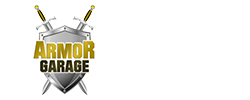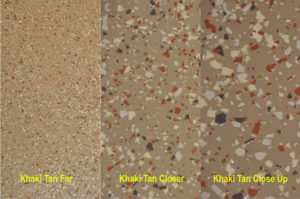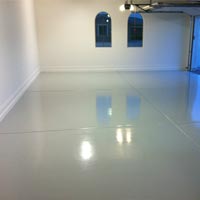
Installing Garage Epoxy Flooring
When it comes to garage flooring epoxy there are several mistakes that could be made, but we are going to split them into two categories: Technical and Outright Blunders. The idea behind installing epoxy in garage, warehouse, home, or workshop, of course, is to make sure that the floor does not become damaged for any reason and to add a beautiful high gloss finish that you can be proud of. Before you can get to that point, you need to make sure that you are using the right product and performing the installation properly, which is sometimes easier said than done. Let’s start with some of the more obvious mistakes and then move on to the steps you can take to prevent them.
Technical Mistakes to Watch out For
The biggest technical mistake that you can make when you’re in the process of installing your new Epoxy Garage Flooring is choosing an epoxy mix that doesn’t actually match what you are doing. What do we mean by this exactly? Well, consider that the lowest form of epoxy is water based, and there is a good chance that it does not have a very high abrasion rating. The abrasion rating determines how much abuse the floor in question can take before it needs to be replaced or at the very least re-coated.
When you are buying your epoxy, take a look at the technical specifications first and see what the abrasion rating is. The lower the number, the better the floor will be protected. Yes, this might sound a bit backward, but it is the truth in this case.
The technical specifications will generally display the following attributes:
Solids content – Percent of Solids remaining following the curing of content, the higher the better. With 100% being the best an Aliphatic epoxies being the best 100% solids epoxies available.
Volatile Organic Contents – This goes toward the idea of eco-friendliness in garage epoxy flooring. It involves the number of Volatile Organic Compounds that are released into the environment as the coat/sealer dries. Some states now require that any epoxy sold must be Low VOC. Low VOC epoxies are also good for areas where odor would be a problem. Being Low VOC means that fewer chemicals/solvents are released into the air and therefore less odor.
Abrasion Resistance – Once again we have the abrasion resistance which is determined by the Taber CS-17. This test involves an abrasive plate being mounted to a turntable and weighted at 1000 grams. The industry standard for this test is 500 cycles and all removed coating is recovered via a vacuum system for maximum accuracy. The coating loss is measured in milligrams, and the lower the number, the more durable the coating. Note that most epoxy coatings generally have a loss range of 20-45, a heavy duty topcoat for residential use should have a loss rating of no more than 20. For commercial or industrial applications a rating of no more than 4-8 should be used. Many so called heavy duty or industrial epoxies have very high abrasion ratings of 25 and higher which means if you don’t check the ratings prior to purchase you will be wasting your time and money. Keep in mind that abrasion ratings are like the Richter scale and that each mg less in the abrasion loss rating is exponential.
Adhesion – This is exemplified in Pounds per Square Inch, showing how much force is needed to remove the coating from the surface. Any rating below 350 PSI generally means that the coating can be removed, a good epoxy should have an adhesion rating of 375psi – 450psi. This is means on a properly prepared surface the epoxy should not be able to be separated from the concrete.
Chemical Resistance – Determines how well the floor is able to stand up to corrosives and acids that can leak from your vehicle or from the type of work you may be doing on the floor. Epoxies provide some protection from acids and caustic chemicals but a properly done epoxy flooring job will have a high quality urethane topcoat applied over the epoxy which provides substantially more protection against chemicals and acids.
A note here, an epoxy is not a topcoat and can never be made into a topcoat by simply adding in so called additives. This is just a way some companies try to cut corners because they don’t or can’t make a true urethane based topcoat.
Failing to pay attention to these important facts can result in serious problems, so make sure you read the performance specifications of the epoxy you are considering to buy and if you don’t understand any of it, call and ask questions.
The More Common Blunders
 There are many mistakes that can be made during the installation of garage epoxy flooring as we are sure you are aware, but we have cut it down to just a few for the sake of expedience.
There are many mistakes that can be made during the installation of garage epoxy flooring as we are sure you are aware, but we have cut it down to just a few for the sake of expedience.
Failing to Prepare your Floor
Your floor most definitely needs to be prepared if you are to complete the installation properly. You need to do more than just move everything out of the way; you need to make sure that you have scrubbed the floor, getting someone like Wise Guys Pressure Washing of Atlanta Georgia to power wash the floor prior to acid etching to remove all dirt and debris is always recommended, and most importantly make sure that when you’re done with the preparation process that your floor is completely clean and 100% dry. If not it’s recommended that you etch the floor a second time and scrub in a perpendicular direction to the first etching to ensure you clean any small missed spots from the first etching. A small spot you might have missed will usually at some point in the future result in what we call a pop. It’s a small spot that just seems to pop off the floor. This is not the fault of the epoxy but simply a result of a little dirt or moisture left in the floor after you prepped it. Not something to freak out about, you can just sand the area clean and apply some touch up epoxy to fix the problem.
Failing to Check for Moisture
Always make sure that your concrete is dry before you try to apply epoxy; we cannot stress this enough. The garage flooring epoxy will not adhere to a wet surface, either from moisture coming up through the slab or leftover moisture from cleaning. before considering applying an epoxy to your floor, tape down a piece of 3′ x 3′ plastic to your floor with a good duct tape making sure all edges are sealed 100%. Let sit for 2-3 days and then see if any moisture has accumulated underneath. No moisture means you’re good to go. The presence of moisture means you need to take an extra step such as applying a moisture sealing epoxy primer. With this being said, if you have noticed a slab leak, getting in touch with a professional repair company could help get everything looking as good as new. You don’t want to leave it too long to get it fixed, as the damage could get worse over time.
After cleaning it’s recommended to wait a minimum of 24hrs to let the floor dry properly, 48 hrs may be needed depending on temperature and humidity. Always better to allow extra dry time to be safe. Just a note for clarification purposes. Once your floor has been epoxied it is waterproof and no amount of water hitting the surface of it can harm it. It’s only water and or moisture coming up through the slab that is the problem. So remember if you do get a slab leak you will need to contact a professional, always be vigilant.
Trying to Stretch it Out
One of the biggest mistakes that you can make is to try stretching out your epoxy when you are running low. If you think you’re running low work your way to a corner so that you run out at the corner, then order more product to fill in the corner. If you are top coating, apply the topcoat once the epoxy has dried but stay back 6″ from the edge of the unfinished epoxy so that when you apply the new epoxy to the unfinished area you can lightly overlap that epoxy edge to blend in. Then apply the topcoat and overlap lightly onto the previously applied topcoat. We recommend that you lightly sand a strip of the topcoat with 100 grit paper to rough up, this will ensure that the overlap topcoat area bonds properly.
If you do try to stretch it out, it might be thinner in some areas, causing it to be different shades and less glossy in some areas. In the end, it will completely defeat the purpose.
Bad Mixing Practices
Don’t mix too fast! There’s no rush! If you mix too quickly, you will usually end up with air bubbles in your mixture which will translate to the surface that you are applying it to. Additionally, make sure that you are paying attention to the ratios and mixing everything properly. it’s important to follow the directions of your particular epoxy. High quality epoxies will stress not to mix all the epoxy at once. Since high quality epoxies cure via chemical reaction and not air drying which means the more you mix the more chemical reaction you get and it could cause the epoxy to cure rock hard in the bucket in about 5-10 minutes. Also it’s a good idea that after mixing a small batch is to pour it out onto the floor in a bead. The cooler floor temp will slow down the curing process. We recommend that you mix no more than 1 gallon per person rolling.
These are just a few of the big mistakes you might find yourself making when you are dealing with epoxy. Remember, garage flooring epoxy can be an amazing innovation for your garage, warehouse, home, or shop, but you need to make sure that it is done correctly. Our expert Reps are always on hand to help you do it right.


 It may seem like a good idea when you read about it but doing it is much harder than it sounds. First off you need a tremendous amount of flakes, 70-75lbs of flakes for a typical 2 ½ car garage. Trying to do it with less chips and your floor will come out blotchy! Then you have the problem of applying so many flakes without them piling up in uneven lumps. If you’re not experienced in applying the color flakes they will end up in uneven layers and piles. Other companies trying to sell you on this will tell you that you can scrape the chips down. Again easier said than done and even after scraping and even sanding, the floor won’t look right.
It may seem like a good idea when you read about it but doing it is much harder than it sounds. First off you need a tremendous amount of flakes, 70-75lbs of flakes for a typical 2 ½ car garage. Trying to do it with less chips and your floor will come out blotchy! Then you have the problem of applying so many flakes without them piling up in uneven lumps. If you’re not experienced in applying the color flakes they will end up in uneven layers and piles. Other companies trying to sell you on this will tell you that you can scrape the chips down. Again easier said than done and even after scraping and even sanding, the floor won’t look right.
 Let’s talk about bases first. Water based epoxies are your lowest quality epoxies since about 50% of the epoxy is water. So that as the epoxy dries the water evaporates out and you’re left with only about 50% of paint material on the floor. In addition to that, water based epoxies have low abrasion resistance, poor adhesion and will wear off your floor very quickly. The same applies to most solvent based epoxies, they’re just not good quality coatings. Solids based epoxies are the most expensive to make and when you apply it to your floor you get whatever percentage of solids in the epoxy onto your floor. For instance, if you apply a 100% solids epoxy, you get 100% of the epoxy onto your floor. If you apply a 90% solids epoxy, you lose 10% of the product to evaporation. Our Garage Floor epoxies are 100% solids.
Let’s talk about bases first. Water based epoxies are your lowest quality epoxies since about 50% of the epoxy is water. So that as the epoxy dries the water evaporates out and you’re left with only about 50% of paint material on the floor. In addition to that, water based epoxies have low abrasion resistance, poor adhesion and will wear off your floor very quickly. The same applies to most solvent based epoxies, they’re just not good quality coatings. Solids based epoxies are the most expensive to make and when you apply it to your floor you get whatever percentage of solids in the epoxy onto your floor. For instance, if you apply a 100% solids epoxy, you get 100% of the epoxy onto your floor. If you apply a 90% solids epoxy, you lose 10% of the product to evaporation. Our Garage Floor epoxies are 100% solids. Girvan P. wanted a two color floor with a border. This is how he did it. Once the floor is properly prepped by etch acid etching or grinding and or both. You apply the first base coat. In Girvan’s case he wanted a solid color so we went with our Armor II commercial system. So he did the whole floor in Light Gray and then when that dried the next day he taped off the rectangles and applied the Dark Gray epoxy inside the tape lines. He let that dry and he then taped off the border area and lightly sanded the epoxy floor border area inside the taped area. This was because the base coat had now been curing for more than 24 hours. Anytime an
Girvan P. wanted a two color floor with a border. This is how he did it. Once the floor is properly prepped by etch acid etching or grinding and or both. You apply the first base coat. In Girvan’s case he wanted a solid color so we went with our Armor II commercial system. So he did the whole floor in Light Gray and then when that dried the next day he taped off the rectangles and applied the Dark Gray epoxy inside the tape lines. He let that dry and he then taped off the border area and lightly sanded the epoxy floor border area inside the taped area. This was because the base coat had now been curing for more than 24 hours. Anytime an 
 There are many mistakes that can be made during the installation of garage epoxy flooring as we are sure you are aware, but we have cut it down to just a few for the sake of expedience.
There are many mistakes that can be made during the installation of garage epoxy flooring as we are sure you are aware, but we have cut it down to just a few for the sake of expedience.